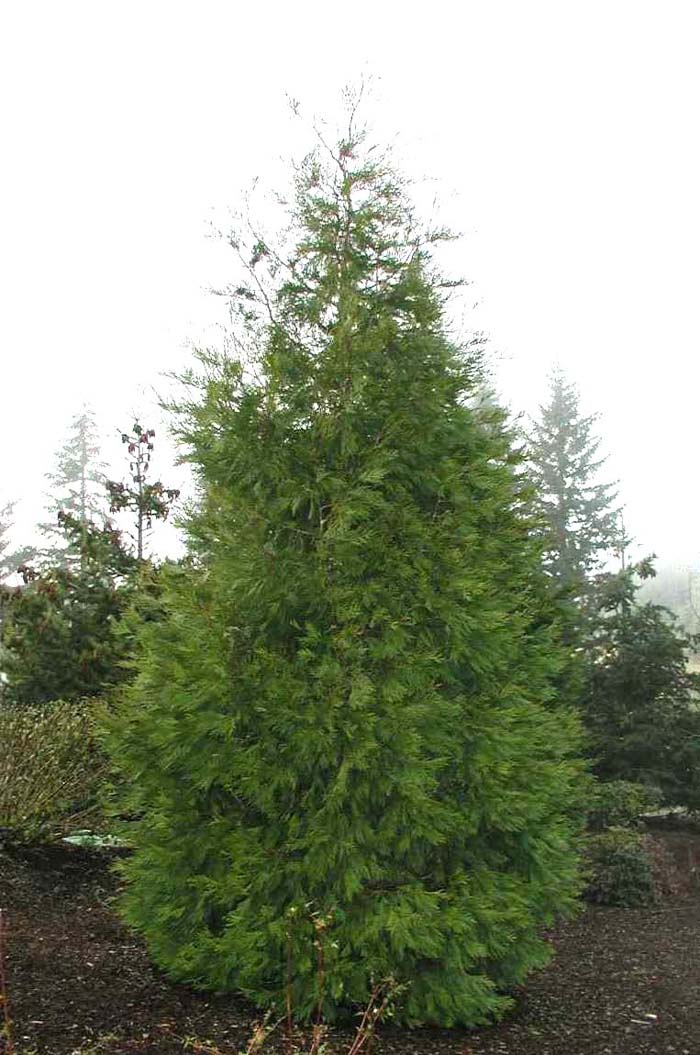| Botanical Name: Calocedrus decurrens | Add |
| Common Name: Incense Cedar |


-
Anatomy
-
Culture
-
Design
Plant Type
Tree, Conifer
Height Range
25-40', 40-60', 60-100'
Flower Color
Green
Flower Season
Spring
Leaf Color
Green, Blue Green, Dark Green
Bark Color
Brown, Red
Fruit Color
Brown, Orange, Yellow
Fruit Season
Summer, Fall
Sun
Full, Half
Water
Very Low, Low
Growth Rate
Moderate, Slow
Soil Type
Sandy, Clay, Loam, Rocky, Unparticular
Soil Condition
Average, Rich, Poor, Well-drained, Moist, Dry
Soil pH
Acid, Neutral, Basic
Adverse Factors
n/a
Design Styles
Formal, Mediterranean, Ranch, Wetlands, Woodland
Accenting Features
Fragrance, Silhouette, Specimen
Seasonal Interest
n/a
Location Uses
Background, Lawn, Park, Roadside
Special Uses
Hedge, Screen, Wind Break
Attracts Wildlife
Birds, Wildlife
Information by: Carol Bollinger
Photographer: Normans/Sortomme
Photographer: Normans/Sortomme
-
Description
-
Notes
The cedar is an attractive, stiff, narrow evergreen tree which has a columnar growing pattern and maintains a central leader. The foliage is comprised of scale needles, while the coarse bark has an attractive cinnamon red-brown coloring. The cedar retains its color in winter and under good cultiral conditons, will maintain its foliage to the ground. It serves as an effective screening evergreen, and contrasts well with Maples and other deciduous trees and flowering plants.
The decurrens is highly adaptable and may thrive under varying exposure, soils, and moisture. While it can withstand chalk or limestone soils, it is intolerant of air pollution. It combines well with other broadleaf evergreens.